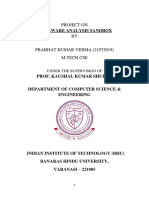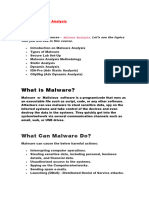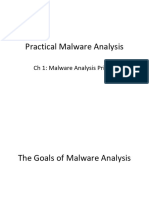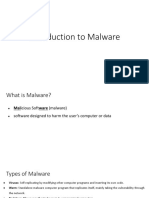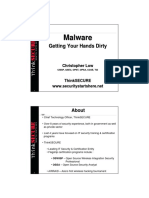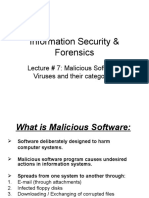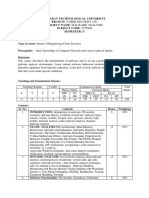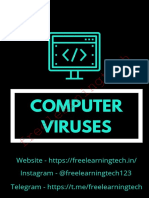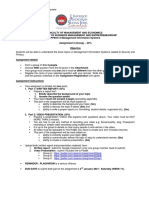0% found this document useful (0 votes)
29 views22 pagesLecture 1 - Introduction To Malware Analysis
The document outlines the CCY3102 course on Malware Analysis and Reverse Engineering, focusing on foundational knowledge, ethical practices, and defensive security. It details prerequisites, learning objectives, required tools, assessment structure, and safety guidelines for analyzing malware. The course also covers various types of malware, analysis methods, and emphasizes responsible disclosure and ethical considerations in security research.
Uploaded by
aliahmed6yhbCopyright
© © All Rights Reserved
We take content rights seriously. If you suspect this is your content, claim it here.
Available Formats
Download as PDF, TXT or read online on Scribd
0% found this document useful (0 votes)
29 views22 pagesLecture 1 - Introduction To Malware Analysis
The document outlines the CCY3102 course on Malware Analysis and Reverse Engineering, focusing on foundational knowledge, ethical practices, and defensive security. It details prerequisites, learning objectives, required tools, assessment structure, and safety guidelines for analyzing malware. The course also covers various types of malware, analysis methods, and emphasizes responsible disclosure and ethical considerations in security research.
Uploaded by
aliahmed6yhbCopyright
© © All Rights Reserved
We take content rights seriously. If you suspect this is your content, claim it here.
Available Formats
Download as PDF, TXT or read online on Scribd
/ 22





